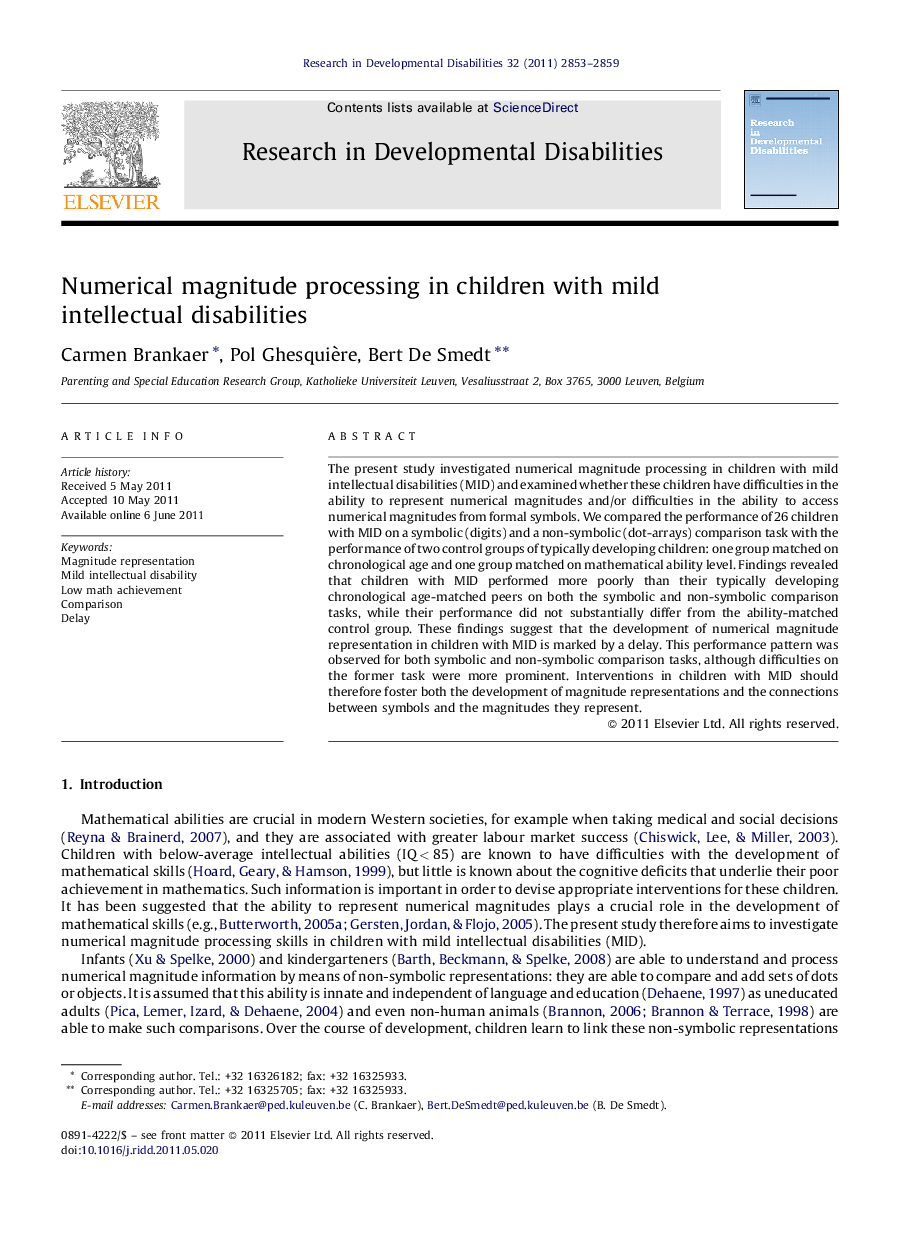| Article ID | Journal | Published Year | Pages | File Type |
|---|---|---|---|---|
| 371875 | Research in Developmental Disabilities | 2011 | 7 Pages |
The present study investigated numerical magnitude processing in children with mild intellectual disabilities (MID) and examined whether these children have difficulties in the ability to represent numerical magnitudes and/or difficulties in the ability to access numerical magnitudes from formal symbols. We compared the performance of 26 children with MID on a symbolic (digits) and a non-symbolic (dot-arrays) comparison task with the performance of two control groups of typically developing children: one group matched on chronological age and one group matched on mathematical ability level. Findings revealed that children with MID performed more poorly than their typically developing chronological age-matched peers on both the symbolic and non-symbolic comparison tasks, while their performance did not substantially differ from the ability-matched control group. These findings suggest that the development of numerical magnitude representation in children with MID is marked by a delay. This performance pattern was observed for both symbolic and non-symbolic comparison tasks, although difficulties on the former task were more prominent. Interventions in children with MID should therefore foster both the development of magnitude representations and the connections between symbols and the magnitudes they represent.
► We examined numerical magnitude processing in mild intellectual disability (MID). ► Symbolic and non-symbolic comparison skills were assessed. ► Magnitude comparison is impaired in children with MID. ► Children with MID show a delay accessing numerical magnitudes from symbols.
